Immense Full Moon Palace Excavated by Rare Collaborative Team from both North and South Korea
The ancient Manwoldae, a 10th century royal palace, was built in what is now Kaesong, North Korea during the Koryo Dynasty. Historians and archaeologists from both North and South Korea are now carrying out a rare collaborative project to unearth what is considered one of the most important ancient sites in the shared history of the two conflicting nations.
The vast “Full Moon” Manwoldae palace complex at the foot of Mount Songak has been the site of excavation since 2007. Archaeologists from North and South Korea have been uncovering the immense palace’s unique architecture and engineering, which, according to Archaeology magazine, reveals “a profound respect for the natural landscape.”
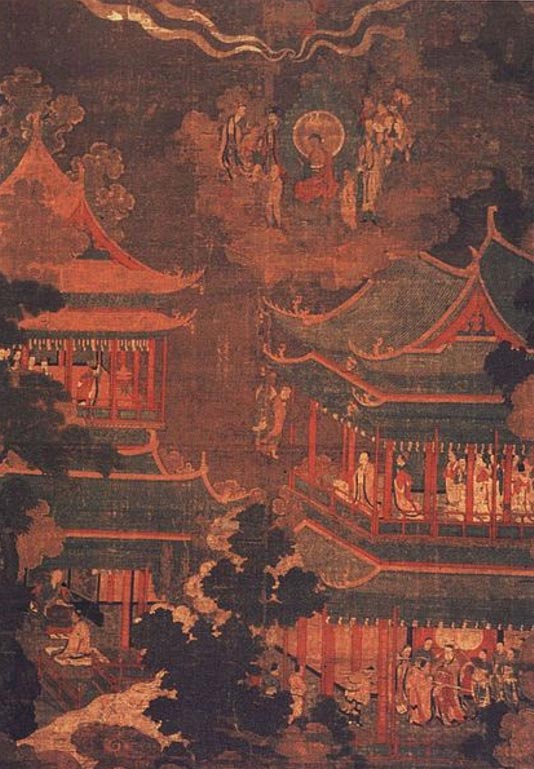
A Koryo/Goryo painting depicting the Imperial Palace. Public Domain
Built in 919 AD during the Koryo (or Goryo) dynasty under King Taejo (877-943 AD), the palace was moon-shaped—curved to fit into the natural environment without damaging or greatly altering the landscape. It is said to have been constructed within the ancient concepts of Feng Shui, the harmonizing of everyone and everything with the surrounding environment.
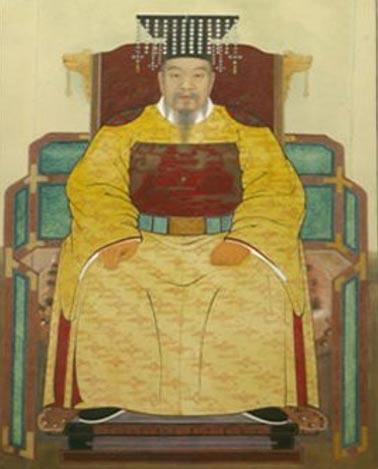
Portrait of King Taejo founder of the Koryo (Goryo) Dynasty, which ruled Korea from the 10th to the 14th century. Public Domain
Archaeology magazine notes that at the time the site was known as either “the imperial palace” or “the forbidden inside” as it was a home for royalty where affairs of state were conducted. Large, multistory buildings and halls contained shrines and living quarters—the largest of all being the immense throne room.
- High-tech pottery center discovered at Bronze Age China site, 3,000 years before Industrial Revolution
- The Ancient Complex of Koguryo Tombs in North Korea
The grand palace was only one part of the sprawling complex which included education institutions (a 1,000-year-old academy which was the top school during that era), tombs, a sophisticated drainage system, defensive walls and gates.
Royal astrologers used a tall stone astronomy tower known as the Chŏmsŏngdae. Researchers have found that the granite platform remaining from the ancient tower aligns with the main cardinal points. It was thought to have been used as an astronomical and meteorological observatory.
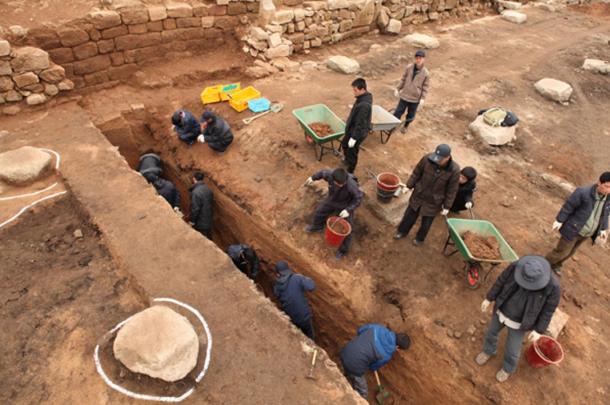
Sophisticated engineering at the palace is revealed by the excavation of an ancient set of complicated drainage canals. Credit: National Research Institute of Cultural Heritage
The palace complex was believed to have been decorated in bright blues and whites, and embellished with gold. The color scheme is significant, as the palette is thought to have inspired the Korean royal colors seen during later dynasties.
More than a thousand patterned roof tiles have been recovered during excavations. Some artifacts are decorated with intricate vines and dragons. In addition, a significant celadon cylinder was found at Manwoldae. Though Koryo was famous for the jade-green celadon ceramics, the two-foot-tall (60 centimeter) celadon cylinder is a surprise to researchers and artisans alike.
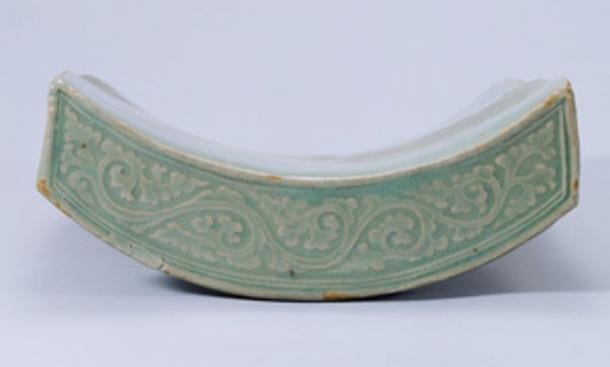
Decorated celadon roof tile of the Koryo/Goryo dynasty. Credit: National Museum of Korea
Archaeology magazine writes: “Yun Do-hyeon, a celadon artisan who currently works in South Korea, greatly admires the ancient artist's work. ‘A celadon piece as large as this is rarely made, as there are risks of bending and even damaging the work,’ Yun says. Even when much smaller celadon pieces are placed in a furnace to be fired, the inconsistent heat results in only one in five objects emerging undamaged. Archaeologists are still unsure of the cylinder's function since nothing like it has ever been found in either North or South Korea.”
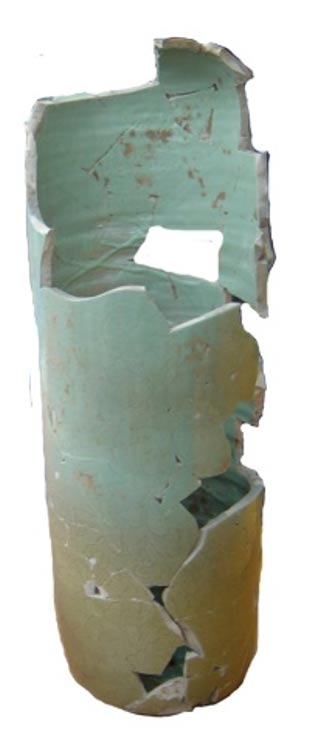
The surprising 2-foot-tall ‘vase’ is one of the largest celadon pieces ever found in Korea. Credit: National Research Institute of Cultural Heritage
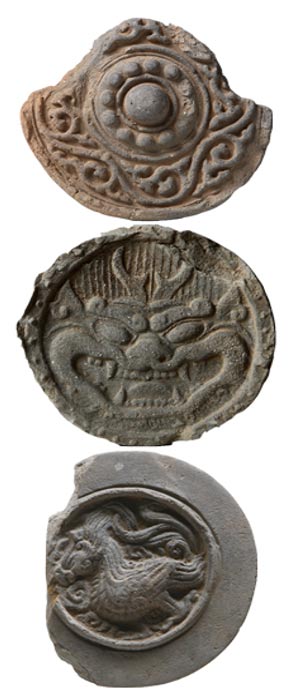
Decorated artifacts found at the archaeological site in Kaesong, North Korea. Credit: National Research Institute of Cultural Heritage
The Manwoldae palace was burned to the ground during the Red Turban invasions of Korea in 1361, leaving only ruins remaining. “The Red Turban Rebellion was a largely Han Chinese rebellion against the Mongol Yuan Dynasty ruling China at the time, and the Red Turban army twice invaded the Korean Peninsula because Koryo was a Yuan vassal state (as well as to obtain supplies),” writes NK News.
Little is now known about the medieval Koryo era, as they left behind few records, and any references to them were written by historians of succeeding dynasties.
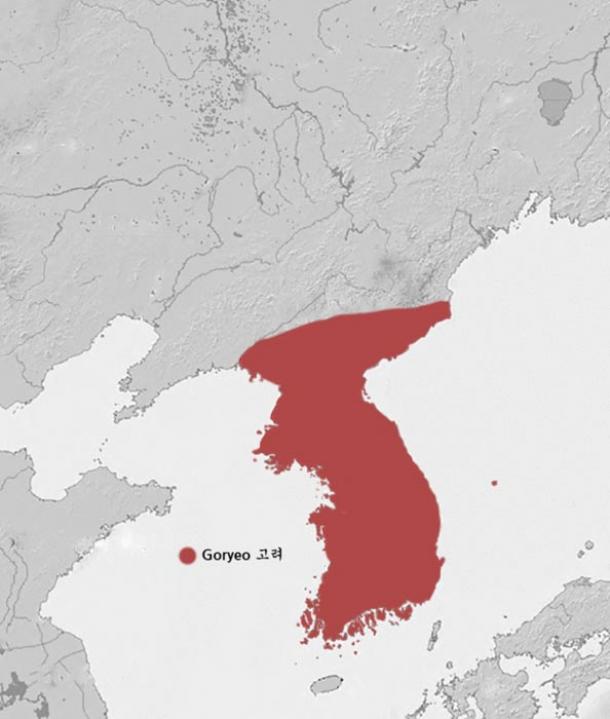
The extent of the Koryo (Goryo) Dynasty in 1389. Wikimedia Commons
Despite political tensions between North and South Korea since conflicts in the 1950s, this inter-Korean project to unearth and study the ancient historical site is a step towards cooperation between the two countries, and a rediscovery of their shared history.
- Ancient Ruins of North Korea’s Old Capital Joins World Heritage List
- Discovery of Ancient Tomb Suggests Man was sacrificed to join a Noblewoman in Death
NK News reports, “South Korea’s Office of the Association of Inter-Korean Historians sent an advance team of 13 historians to Kaesong on Tuesday and more than 30 officials are expected to visit the site in mid-August. The MOU plans to provide 276 million won ($268,000) for the project.”
This cooperative project has been bringing to light the shared ancient history of the region. The joint dig offers the opportunity to share new archaeological technologies and techniques, to build awareness of historical sites, and to create common ground and cultural exchange.
The Guardian reports that the king’s bedroom, Manryeong-jeon, is the current focus of the excavation team.
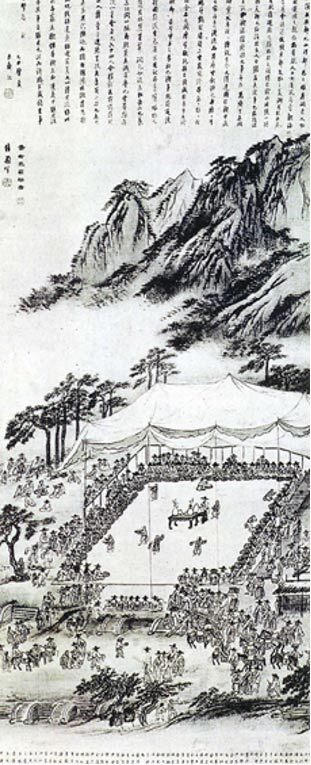
Painting, Kyehoe on Site of Manwoldae. Public Domain
Manwoldae Palace and the Historic Monuments and Sites in Kaesong were designated as UNESCO World Heritage Sites in 2013.
Featured Image: Manwoldae palace site, specifically a grand building where portraits of the Koryo Dynasty kings were kept. Archaeologists from North and South Korea work together to reveal more of their shared history. Credit: National Research Institute of Cultural Heritage
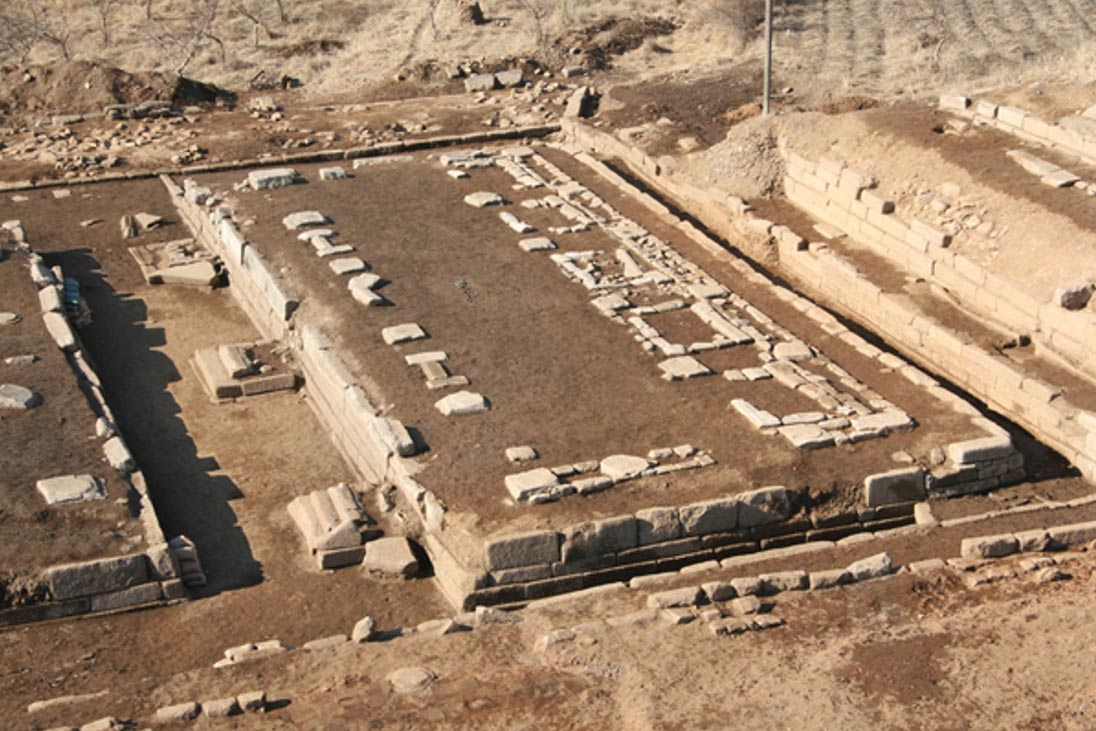
No comments:
Post a Comment